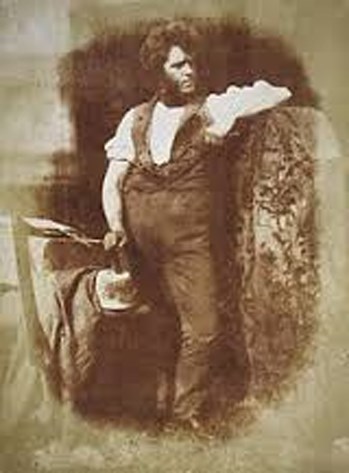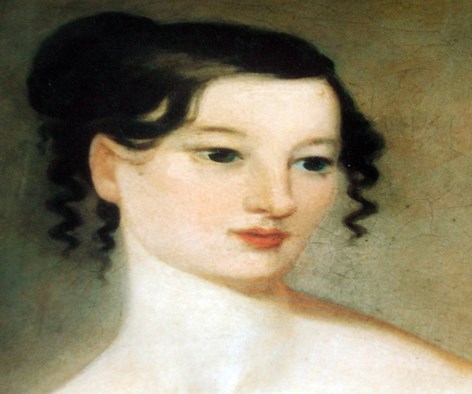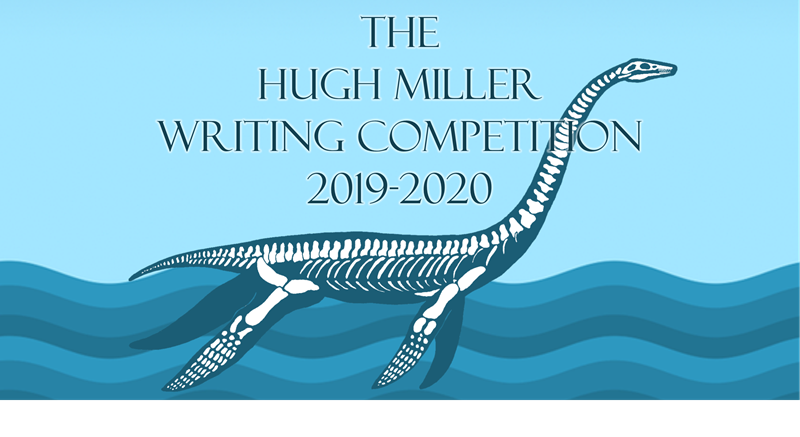Geologist, folklorist, polymath
Hugh Miller (1802-1856) has been acclaimed as "the supreme poet of geology" and called "the David Attenborough of his day." He gained such accolades not only as a pioneer of the science in its first heyday, but because he wrote about everything he saw and discovered in such delightful terms. He could lyrically evoke our planet's passage through deep time, while also describing his fossils with homely metaphors and comparisons with the familiar everyday.
Miller became a leading popular science writer, with numerous books and essays to his name. This was quite an achievement, given that he grew up in poverty and was a largely self-taught polymath, rising from jobbing stonemason to national newspaper editor and well-known writer. He was intrigued not just by geology, but by Scotland's wide and varied landscapes and how people interacted with them, and also by folklore and fairytales. He was known locally in Cromarty as a 'sennachie' (storyteller). His life brought triumphs in science and literature, in journalism, and for his evangelical Christian faith. But it was also beset with tragedy and conflict, and he died by suicide at the age of only 54, on Christmas Eve, 1856.
Hugh Miller stood just short of 6ft tall, a man of most striking appearance with a great mass of flaming red hair and "sapphire" blue eyes (according to his wife, Lydia). He was proud of immense physical strength, an epic walker, cragsman, and sea diver, but suffered terribly all his life from "the stonemason's malady" - silicosis - and this likely played a key part in his untimely death.
The picture below is a Calotype photograph of Hugh Miller as stonemason taken in 1843 by Hill and Adamson.
A life preserved in words
One of our key goals at the Friends of Hugh Miller is to keep Miller's best writing in print. As is common with all writers, his work goes in and out of fashion, and the only reliable source for obtaining many of Miller's books is public libraries. His autobiography My Schools and Schoolmasters is undoubtedly the best account of his momentous boyhood and youth. Most recent biographies by George Rosie and Dr Michael A Taylor are accurate and very readable. Miller's wonderful collection of folklore, Scenes and Legends of the North of Scotland, gathered mostly by the fireside in his birthplace Cottage, helped to launch his literary career.
Miller's classic geological work,The Old Red Sandstone, or New Walks in an Old Field, is shortly to be republished in new edition comprehensively introduced and annotated by Professor Ralph O'Connor and Dr Michael Taylor. His tour volume First Impressions of England and Its People, proved enduringly popular. The reprint of another most accessible travelogue, The Cruise of the Betsey, was released in September 2022, and in it Miller describes his epic voyages in the Inner Hebrides in the 1840s.
For a more comprehensive list of relevant publications please see the Bibliography.
Lydia Falconer Fraser, wife of Hugh Miller
The story of Lydia Falconer Fraser is well-told in Elizabeth Sutherland's biography, Lydia, Wife of Hugh Miller of Cromarty. There are, recounted in full, details of their family, Lydia's support for Hugh in securing posthumous publication of much of his work, her talents as a best-selling writer for children, and her own travails with ill-health.
The picture to the right shows Lydia Miller, "the only surviving portrait of a young woman in love", by William Kay.
A Living Legacy
Miller's work and reputation suffered a serious eclipse for most of the last century, when all his books fell, and stayed, out of print. His geological interpretations of Earth's history were largely superseded by subsequent discoveries and research, and by the 20th century Darwinism was so popular that Miller's faith-based opposition to pre-Darwinian evolutionary theory seemed increasingly outdated
However, from the closing years of the 20th Century, continuing on today and into the future, we have witnessed a very necessary, comprehensive and overdue re-evaluation of Hugh Miller's worth. Publication in paperback in the 1990s of both Miller's autobiography and his volume of folk tales, edited by prominent Scottish author James Robertson, spurred on this revival. A series of academic conferences with international participation in 2002, 2008 and 2017 have confirmed Miller's due place in palaeontology and the history of the science. The Museum was opened at Miller House in Cromarty in 2004, telling the story far more clearly and comprehensively than was ever possible in the cramped Birthplace Cottage. Miller House will be refurbished anew in the coming years.
The Hugh Miller Writing Competition
From 2015 to 2020, the Scottish Geodiversity Forum in partnership with The Friends of Hugh Miller and others, ran a series of Hugh Miller writing competitions, which brought forth outstanding new writings on the natural world. The first two competitions are embraced in a treasure chest of an anthology, Conversations in Stone, published in 2019 and reviewed in our magazine, Hugh's News, and on this site's Cabinet of Curiosities page. Other new initiatives are outlined in the Meet the Friends page.


